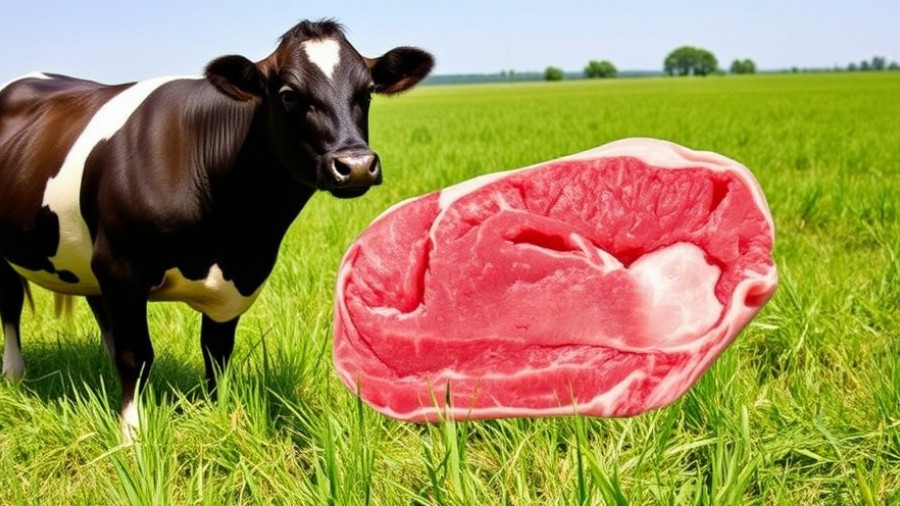
The Hidden Truth About Grass Fed Beef Labels
In a world increasingly focused on sustainable and health-conscious food choices, the demand for grass-fed beef continues to rise. However, many consumers may not realize that not all grass-fed beef is created equal. In fact, the current labeling practices can be misleading, leaving shoppers with more questions than answers. Understanding the nuances between different beef labels is crucial for making informed choices. While beef labeling should ideally reflect the farming practices behind the product, the reality is that confusion reigns.
Understanding Regulations: What Does Grass-Fed Really Mean?
Most cattle in the United States are indeed grass-fed at one point in their lives, typically until they reach weaning age. Afterward, they are often placed in feedlots for finishing, where they are fed grains to fatten them up quickly. The USDA's definition allows certain liberties, permitting producers to label beef as “grass-fed” even if the cattle have been corn-finished. This is a serious misunderstanding among consumers who assume that “grass-fed” guarantees a completely grass diet for the animal’s life.
To demystify the process, experts advise looking for labels that specifically state "100% grass-fed," alongside additional terms like "no GMOs" or "no grain-fed byproducts." However, even these terms can be muddied. For instance, some beef labeled as “100% grass fed” can still come from cattle fed distillers’ grains, a byproduct of ethanol production, which is not technically grass.
What Makes Grass-Fed Beef Nutritionally Superior?
One of the core reasons consumers seek out grass-fed beef is the enhanced nutritional profile it offers. Compared to grain-fed beef, grass-fed varieties boast lower levels of unhealthy fats and higher levels of omega-3 fatty acids. The omega-6 to omega-3 ratio is strikingly better in grass-fed beef, moving from about 23:1 in conventional beef to an impressive 2:1 ratio in grass-fed options. In addition, studies demonstrate that grass-fed beef presents higher amounts of essential nutrients including vitamins E and A, conjugated linoleic acid (CLA), and healthy fats.
How to Choose the Right Grass-Fed Beef
If you're committed to purchasing truly grass-fed beef, paying attention to sourcing is essential. One strategy is to buy from local farmers or farmers' markets, where you can inquire about the animal's diet directly. Moreover, ensuring the beef is domestically sourced supports local agriculture and reduces environmental footprints associated with overseas shipping. Many brands also emphasize regenerative farming practices, designed to nourish both the soil and the animals.
In addition, certifications from organizations like the American Grassfed Association signify that the product adheres to stringent animal welfare practices, in contrast to the less rigorous USDA standards. Knowing the farmer or brand behind the product can greatly enhance your confidence in the integrity of the beef.
Culinary Tips for Cooking Grass-Fed Beef
Grass-fed beef is often perceived as more challenging to cook than corn-fed varieties, primarily due to its lower fat content. This means that it can dry out or become tough if overcooked. Chefs recommend cooking grass-fed steaks and roasts on lower heat and keeping a watchful eye on cooking times.
Experimenting with various techniques—such as searing at high temperatures and then finishing in the oven—can yield perfectly juicy results that retain the meat's natural flavors. Remember, the taste of grass-fed beef, often leaner and with a rich, robust flavor, shines best with simple seasonings and careful preparation.
Environmental Impact: The Case for Grass-Fed
Environmentally, the practice of raising grass-fed cattle lends itself to regenerative agriculture principles, which focus on land health and ecosystem recovery. Managed grazing techniques can improve soil quality and biodiversity, making grass-fed beef not only a healthier choice for consumers but also for the planet. Unlike conventional farming that often relies heavily on GMO grains and antibiotics, grass-fed farming typically supports more sustainable animal husbandry practices.
Final Thoughts: Your Choices Matter
Ultimately, the decision to choose grass-fed beef is not just about health but about supporting sustainable agriculture and humane farming practices. As consumers, becoming informed about labels can empower us to make choices that align with our health goals and ethical beliefs. Remember to investigate and ask questions; the quality of your food impacts not just your health, but that of the environment and economy.
Engaging with local farmers and producers can help cultivate a deeper connection to the food we eat, enhancing both its value and our appreciation. So, next time you reach for that steak at the supermarket, ensure you're getting exactly what you expect—real grass-fed beef.
 Add Row
Add Row  Add
Add 



Write A Comment